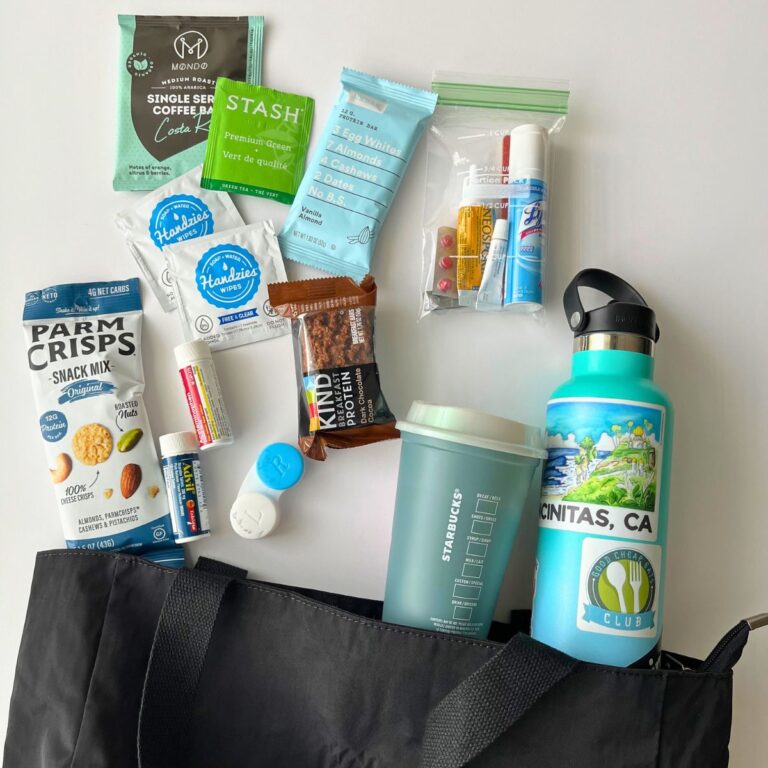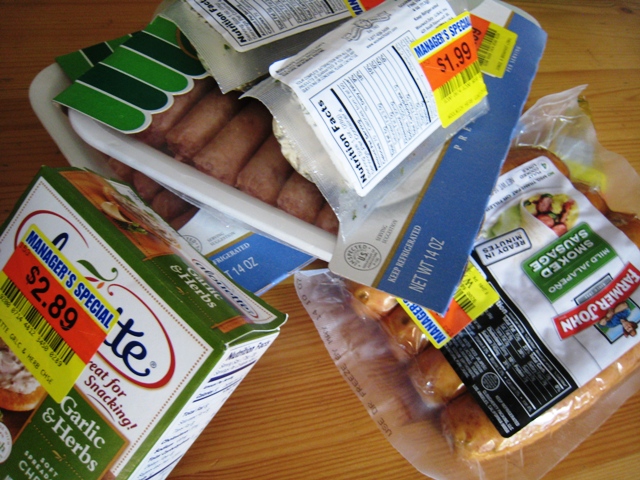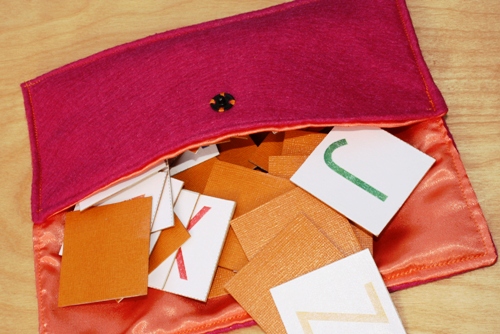Designate Separate Accounts for Different Financial Goals (Frugal Friday)
As an Amazon Associate I earn from qualifying purchases. For more details, please see our disclosure policy.

Want to save this post?
Enter your email below and get it sent straight to your inbox. Plus, I’ll send you time- and money-saving tips every week!
Last night was date night. Hubs and I hopped in the car with no destination in mind. It’s been hot and humid for a week, so we headed toward the ocean, hoping that things had cooled off — and that we’d find something good to eat.
I even left my jacket at home. I never leave my jacket at home. I’m always cold. Except for this last week. I can’t imagine ever being cold again.
We landed at a new restaurant a few towns south of us where the patio was indeed cool and refreshing. We ordered drinks and dinner and chatted. Whew. I love this respite in our week when we can really focus on one another and catch up. Between the start of school, the rental house’s need of a new roof, and the start of the month, we had plenty to chat about.
(And no, neither of believes that those topics are taboo on date night. We talk about what we want to talk about.)
One important part of the conversation was financial goals. And not just goals, but where to put the funds for those goals. We realized having a separate bank account for our Europe fund has really helped us get closer to our goal of saving for the trip.

Two years ago, a bank offered a $200 bonus if you deposited $1500 in a new account. That’s a pretty good return on your investment. So, we opened an account with funds from our emergency fund without any real purpose for the account. Last year we started adding to it, dubbing it our France fund. It’s at a different bank than where we do most of our banking and that helps keep the money there.
We’re about 2/3 of the way toward funding our trip. I don’t think that would have happened if we didn’t have a specially designated place for the money. Something always comes up, you know?
Now we’re on a mission to open new accounts for other financial goals we have. I’m curious how you do it. I’m guessing there are lots of ways — and that you’ve got a bright idea. So spill it.
How do you designate different accounts for your financial goals?

This is Frugal Friday. In an effort to make these weekly financial discussions more interactive, I’m no longer posting a link-up. Feel free to leave a link in the comments. But better yet, chat with us on today’s topic.







Either one of two ways….
Number one is described in a reply above, the second is….
We have a checking account for all of our sinking funds. We keep track of it through the breakdown of savings workdheet found in Dave Ramsey books. One check card, several categories. No robbing peter to pay Paul.
We use several accounts for different reasons – 1 is the regular home account; 1 is for my business and 1 is what I’ve dubbed the laundry account. Each bill that is a fixed payment each month gets paid from this account. The total of those bills are divided in 2 and that amount of money is directly deposited from my paycheck into the laundry account. Since I get paid on the 15th and last day of the month, the total amount needed to pay for all those fixed payments is in that account and can be paid. I never have to worry if I’m going to have enough money to pay them. Any money leftover from the paycheck goes into the house account to pay for everyday life stuff. And if there’s something special to do such as a trip, then I set up an automatic transfer into the savings account from the home account and it always amazes me how quickly it adds up!!!
1) day to day expenses checking account
2) short-term savings (6-12 months)/sinking account (i.e. car insurance, medical, clothing, replacement computer, vacation) with spreadsheet tracking of each sinking fund.
3) Emergency fund/longer term savings account (12 – 60 months)
Account two has a set amount that should go into it each month, but depending what’s in the budget for that month, it may not be funded from my checking account and instead funded from a category being paid out. Everything balances, it’s just my shortcut. For instance, the month that car insurance is due, the car insurance payment comes out of my checking account and the car insurance sinking fund pays for the other sinking funds. I don’t need to move money out of my saving account, just reassign names.
We have a few accounts: one checking account for monthly expenses, one checking account for our family savings, one savings account with our emergency fund, and my husband and I both have our own checking accounts (we give ourselves a little allowance of fun money each month). They are all tied together through our bank – so we can transfer money across the accounts online. Our family savings account is where all the saving happens. We keep a worksheet each month with several line items where we save or hold money for certain specific things. There are somethings that we put a little money in each month – like holiday and birthday gifts. And there are other line items where we put any extra $ we’ve been able to accumulate – a car repair that needs to be made, a home improvement project, etc. We keep our “family savings” as a checking account because we do make quite a few transactions out of this account, our bank would charge us fees if we made that many transactions from a savings account…
Jessica, we have been doing this for years. We set up an individual accounts in ING for each periodic expenses. I think we have 12 accounts opened- it’s easy. We then set up auto transfers from our checking account. When we want to spend money from an ING account, I transfer it into our regular checking account. It works great for us. I read about the ing accounts on a simplemom.net.
My bank offers free online accounts, so I opened two for short term goals. Originally I wanted kite-boarding lessons, so I cut off my cable and started putting the money from the cable into a ‘kite-boarding’ account. Since then I opened a second account and I funded a trip to Europe this past summer. I’m currently saving for a friend’s wedding on November 1st, in which I’m a bridesmaid (gifts, wedding shower, dress, shoes, bachelorette, etc. all add up!) For each new goal, I just re-name the online bank account and then set up an automatic transfer for a specific amount to be transferred every 2 weeks on pay day.
I’m looking forward to starting to put money away for a new car once this wedding is over. I’m aiming to have at least half the amount saved for a new car by 2016, when my current car turns 10.
This is a great idea. We just got a promo from a local bank offering $125 for opening an account. I think we will all it our Italy fund. Thanks for the tip.
We also keep several accounts. The checking account is for all our normal monthly expenses. The kids college savings are in 529 accounts. We have a savings account for mid-term goals. I keep an Excel file at home with all our sub-accounts for the savings — Christmas Club, Emergency Fund, Car Replacement, etc. Last but not least, we have several retirement accounts. Separate accounts keeps us honest. You can’t just “accidentially” dip into the savings to buy an impulse item. You have to make the effort of going to the bank and withdrawing the money from the account. We deliberately set up our accounts so that ONLY the checking account has debit card and check writing.
We have 2 accounts one for our every day bills , living expenses and short term goals (stuff like weekend camping, or new deck chairs) and then the other account holds our emergency fund and the money for our longer term goals (stuff like family vacation, new car) . I keep what I call paper accounts to keep track of what the money in each is for. A simple worksheet with what the money is for at the top and the goal amount we are shooting for. Then I keep track of all the deposits until the goal is made and all the withdrawals once we start working on the goal (like trips to the hardware store to build the back deck). It really seems to work well for us.
Wow i really like that becos i really want an account for donations/community and this being aside our tithes to the church.off course i know my kitchen needswork and my deck in theback does not exist.however as a stay at home mom it saddens me when i cannot contribute to someone’s rent or utility bill becos i have not saved up in that category
Separate savings accounts definitely keep me focused and determined. I really like that INGDirect (well, now CapitalOne360) lets you create any number of sub-accounts and name them as you please, without the fuss I had to go through to open a secondary savings account at my brick-and-mortar bank. Once I paid off my student loans, I renamed that account and started saving for my best friend’s wedding next year.
We also use ING & love it. It is a super easy way to have multiple accounts without all of the paperwork and fuss. It is all in one bank under one sign in name, but you can add and delete accounts with a click of a button. It is super easy to move money between accounts. It also typically gets a much better interest rate than typical checking accounts, which is a nice bonus.
My husband and I liked to make accounts for each category. Here are a few of the accounts/ categories we have:
Checking
Emergency Fund
Car Maintenance
Health/ Maternity Savings
Vet School Savings
Fun Fund
Vacation Fund
Retirement Savings
Kids College Fund
When we go through our monthly budget/ financial goals, it is really easy to look at the accounts and see how we are doing on our goals. It is also simple to divide our ‘extra’ income between the accounts.
Can you get debit cards for each account? How do you draw the money? For that matter, how do you deposit?
Our local community bank holds most of our funds. When we have a financial goal, I set up a new checking account for that purpose, get a check card for that account (our bank can “name the card” like actual raised letters below our names). I then use online banking g to redistribute our money I to the separate accounts on payday. Lastly? Once a year I buy lunch for all the cubicle people at our bank from the late Vince Flynn favorite pizza place, including a hefty tip for the delivery person